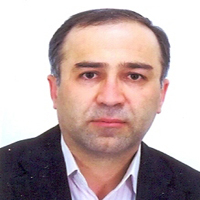Effect of different thawing procedures on frozen semen quality of Ghezel rams
Author(s):
Article Type:
Research/Original Article (دارای رتبه معتبر)
Abstract:
Background and objectives
Today, artificial insemination plays an important role in improving production efficiency and improving genetic progress. In order to realize many of the potential benefits of artificial insemination, semen storage for a long-term is considered a necessary step by freezing process. The freezing process, including the freezing process, leads to morphological changes, damage to the natural functions of the sperm and ultimately reduced fertility. Therefore, improving the thawing method of ram semen is related to the sperm quality indicators and is of considerable importance. The purpose of this study was to compare the effects of two thawing rates on microscopic parameters and enzyme activity of ram semen after freeze-thawing process.
Materials and methods
In this study, semen samples were collected from five Ghezel ram using an artificial vagina twice a week. To eliminate the individual effects of animals, semen samples were pooled after each sampling. Then diluted with Tris diluent. The diluted semen samples were frozen in nitrogen vapor and eventually stored in a tank containing liquid nitrogen until evaluation. The straws containing 0.25 ml semen were thawed at water bath temperatures at (i) 37ºC for 30s and (ii) 60ºC for 6 s. Following the freeze-thawing process, the effects of time exposure and thawing temperature on the kinematic features (CASA), viability, plasma membrane integrity (HOS test), morphological abnormalities, malondialdehyde (MDA) concentration, antioxidant activity (GPx, SOD) and total antioxidant capacity (TAC) were evaluated. The experiment was conducted as a completely randomized and the statistical model includes the effect of temperature and thawing time. The data were analyzed by the general linear model (GLM) procedure and statistical differences between the various group means were determined by Tukey's test. Significant differences were reported at the level of (P<0/05).
Results
The results showed that sperm motility parameters such as PM, VSL, VCL were improved at 37°C, but this increase was not statistically significant. The viability and plasma membrane integrity was improved at 37°C for 30 s compared 60°C for 6 s, but it was no significant. Also, total abnormality did not improve at high thawing rates than low rates. In addition, the results of the comparison of lipid peroxidation (MDA), glutathione peroxidase (GPX), superoxide dismutase (SOD) and total antioxidant capacity (TAC) were no significant at two thawing rates.
Conclusion
According to the results obtained from thawing methods, the thawing at 60°C for 6s cannot be a suitable alternative for semen thawing at 37°C for 30 seconds.Keywords:
Language:
Persian
Published:
Journal of Ruminant Research, Volume:6 Issue: 2, 2018
Pages:
117 to 131
magiran.com/p1910349
دانلود و مطالعه متن این مقاله با یکی از روشهای زیر امکان پذیر است:
اشتراک شخصی
با عضویت و پرداخت آنلاین حق اشتراک یکساله به مبلغ 1,390,000ريال میتوانید 70 عنوان مطلب دانلود کنید!
اشتراک سازمانی
به کتابخانه دانشگاه یا محل کار خود پیشنهاد کنید تا اشتراک سازمانی این پایگاه را برای دسترسی نامحدود همه کاربران به متن مطالب تهیه نمایند!
توجه!
- حق عضویت دریافتی صرف حمایت از نشریات عضو و نگهداری، تکمیل و توسعه مگیران میشود.
- پرداخت حق اشتراک و دانلود مقالات اجازه بازنشر آن در سایر رسانههای چاپی و دیجیتال را به کاربر نمیدهد.
In order to view content subscription is required
Personal subscription
Subscribe magiran.com for 70 € euros via PayPal and download 70 articles during a year.
Organization subscription
Please contact us to subscribe your university or library for unlimited access!


